OEAS/BIOL/IDS 467 OEAS/BIOL 567: Sustainability Leadership |
IntroductionCreating a more sustainable society presents a serious challenge and at the same time an enormous opportunity. Most sustainability-related challenges present wicked problems to society and can best be addressed in a participatory collaborative approach. The students in this course gained experience in participating in such an effort focusing on a real-world problem. The real-world problems addressed in this course relate to the future of the Virginia Coast Reserve and the Brownsville Preserve on the Eastern Shores under climate change and sea level rise and the approaches that can be taken to mitigate impacts and adapt to changes. Each student is representing a relevant stakeholder group and bringing the views, interest and knowledge of this group into the participatory modeling effort. By doing this, the students take leadership for the groups they represent and at the same time integrate into the participatory and collaborate deliberations about a wicked problem. Considering all aspects of balancing the needs of thriving communities and healthy ecosystems in a systems thinking mindset introduces them to complexity. Their effort to develop conceptual and stock and flow models (SFMs) that represent all relevant stocks and flows and the essential variables that are important for impacting the trajectory of the system of systems model helps to develop their skills of addressing the complexity inherent to real-world problems. Sustainability also requires foresight with respect to the wide spectrum of possible futures, and the students' efforts to develop this foresight utilizes a scenario-based approach to explore the spectrum of possible futures under climate change and a dynamic development of population and economy. Based on an understanding of the relevant decision space for the Coast Reserve and the Brownswille Preserve , the students will develop a set of possible interventions to ensure a trajectory of the area towards the desirable future of thriving communities embedded in a healthy environment and they will make recommendations for viable interventions. Case Study ReportThe case study report “Promote Research on the Impacts of Climate Change and Sea Level Rise on Local Socio-Ecological Systems while Managing the Future Changes to the Brownsville Preserve and Virginia Coast Reserve in an Ethically and Economically Responsible Manner” was prepared as a group effort by the cohort of students in the course. The report is available as pdf. |
Learning By Experience: Reflections of the StudentsThe Future of the Brownsville Preserve and the Virginia Coast Reserve under Sea Level Rise and Climate ChangeThe Brownsville Preserve on the Eastern Shores provides a habitat where birds and other wildlife abound. The reserve maintained by The Nature Conservancy provides many services to the neighboring communities. Climate change is expected to have a number of impacts on the Preserve. The 14 undeveloped barrier and marsh islands of the Virginia Coast Reserve constitute the longest expanse of coastal wilderness remaining on the east coast and help to protect Eastern Shore communities from storm surges and sea level rise, as well as providing critical wildlife habitat. Sea level rise poses serious threats to this important coastal reserve. The case study carried out as part of the service learning assessed the potential development of climate-change and sea-level related hazards over time and assessed the impacts these hazards may have on the future of the Reserve and the Preserve. The case study considered the relevant vulnerabilities of the Preserve and explored the spectrum of possible futures for the Preserve. Based on that, the study developed adaptive interventions that could help to ensure a future of the Reserve as an important element in the coastal ecosystem and protective coastal structure. The study recommended adaptive interventions for the next decade that could help to ensure the role of the Preserve both for the wildlife and the neighboring communities. 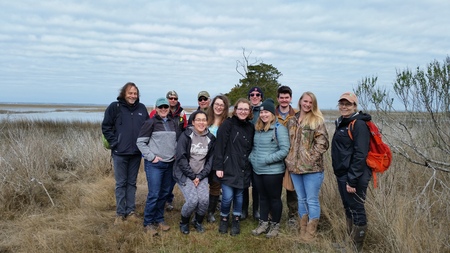 The group visiting Parramore Island. |
Stakeholder Meeting, April 1, 2020
The Stakeholder meeting was held as a Zoom meeting. A recording of the meeting is available here.
| 15:00 - 15:10: | All: Welcome and Introductions |
| 15:10 - 15:20: | TNC: The Challenge of Climate Change and Sea Level Rise from the TNC Perspective |
| 15:20 - 15:30: | Hans-Peter Plag: Conservation Leadership Program at ODU: A Collaboration of the U.S. Fish and Wildlife Service and Old Dominion University (presentation) |
| 15:30 - 16:30: | Leslie Gomez, Kelly Jones, Dylan Lawson, Dan Martin, Shawn McCaren, Christianna Morton, Cristina Robbins: Promote research of the impacts of climate change and sea level rise on local ecological and human systems while managing the future changes at the Brownsville Preserve and the Virginia Coast Reserve in an ethically and economically responsible manner (presentation) |
| 16:30 - 17:00: | Critique and discussion |
Impressions
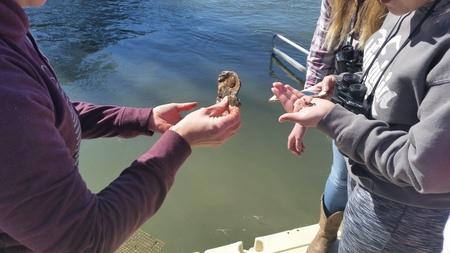 Oysters in a tidal river. | 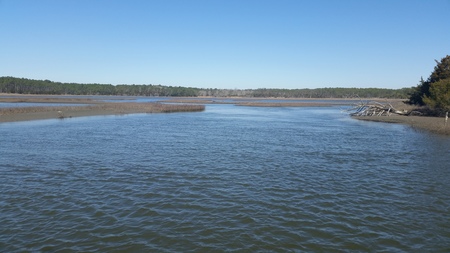 High tide in the river. |
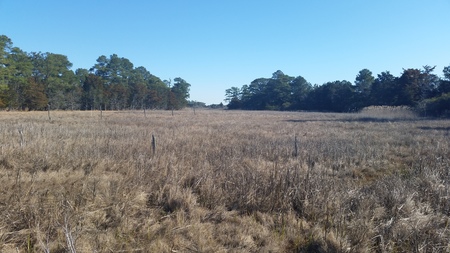 Grasland in the Brownsville Preserve. | 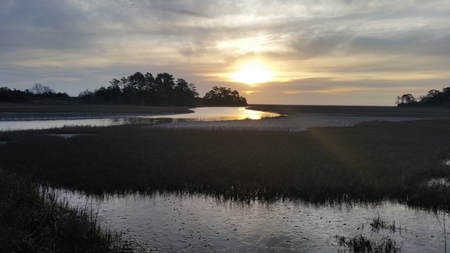 Sunrise near Brownsville House. |
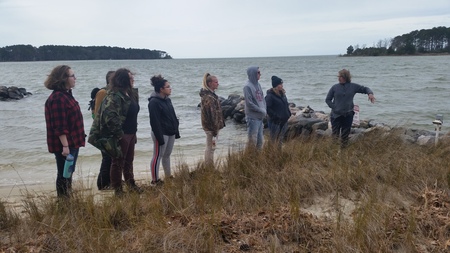 At the living shoreline project at Camp Occahannock. | 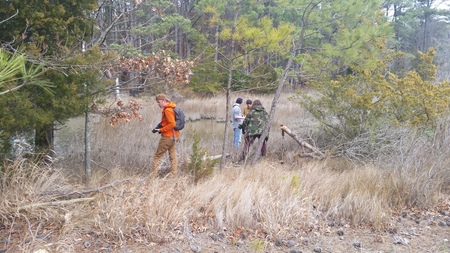 Taking samples. |
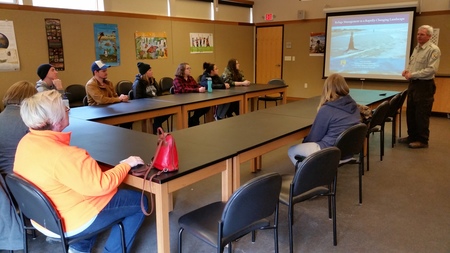 At the Chincoteague National Wildlife Refuge. | 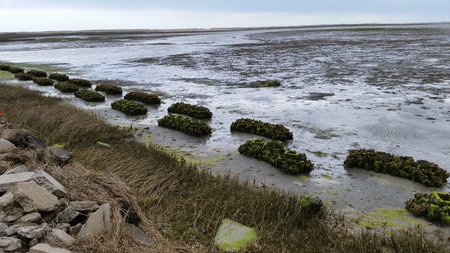 Oyster castles. |
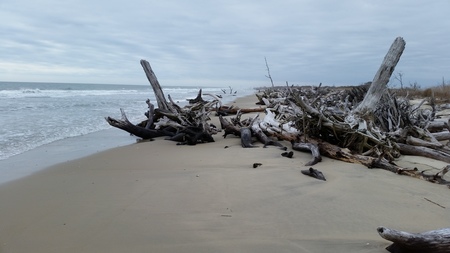 Forest remains on Parramore Island. | 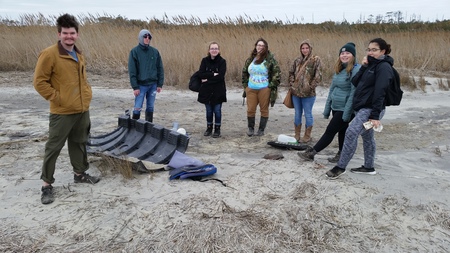 Collecting marine litter at Parramore Island. |
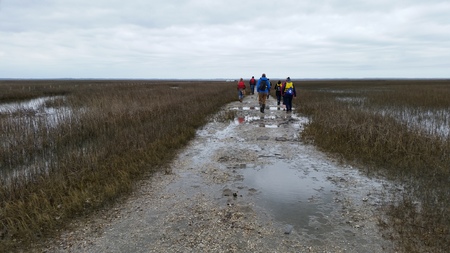 Leaving Parramore Island after high tide receeded from the path. |